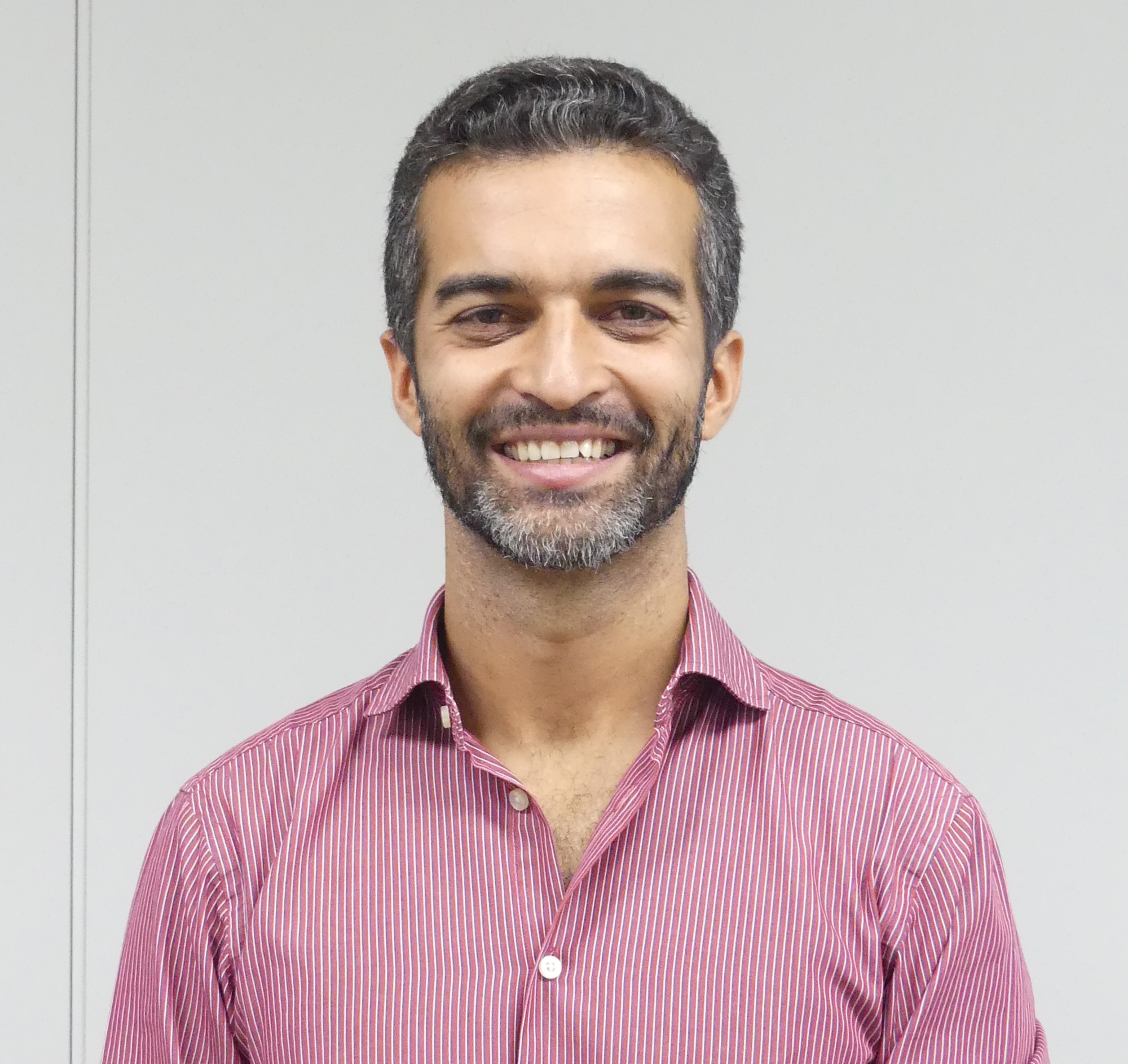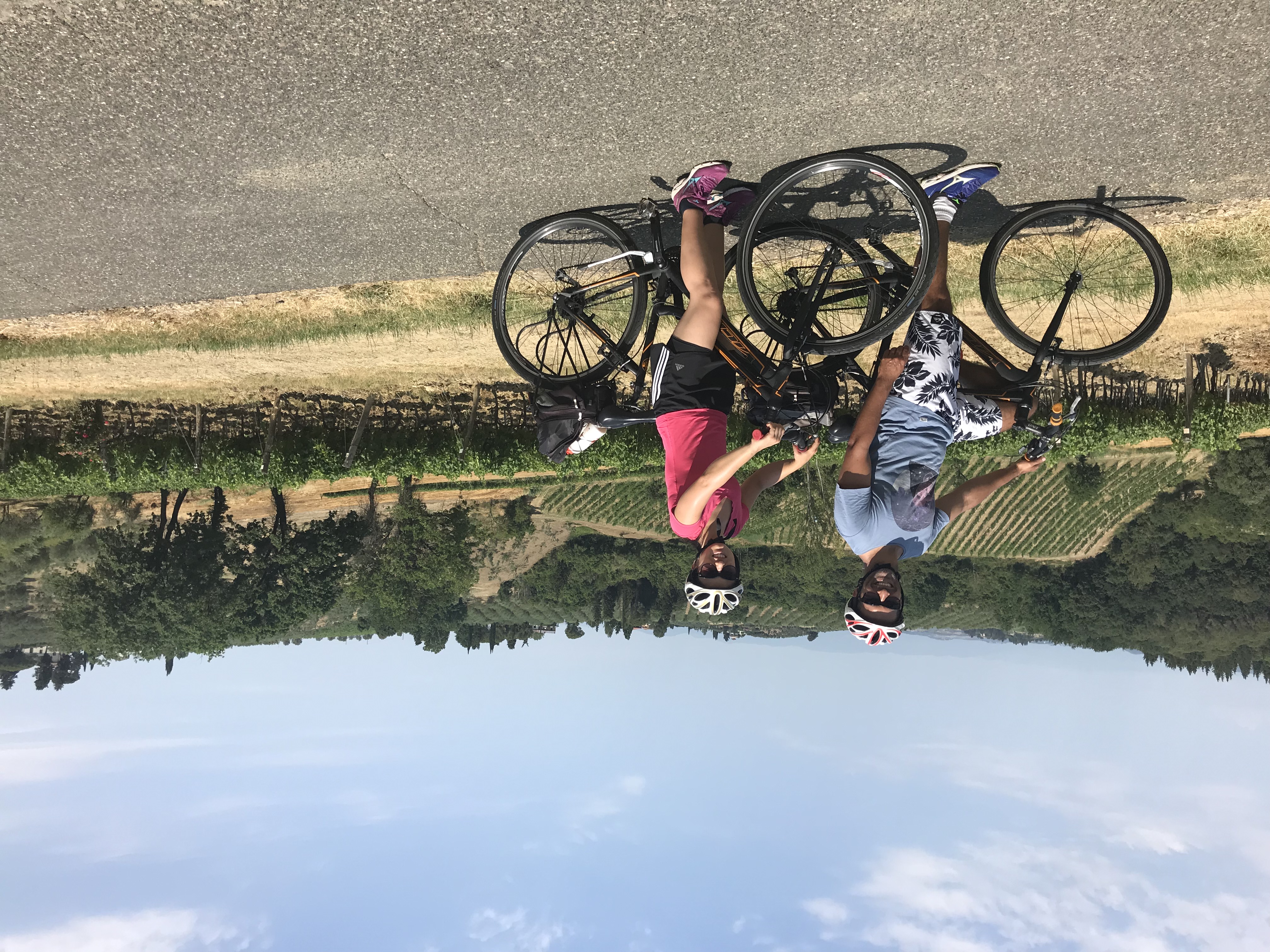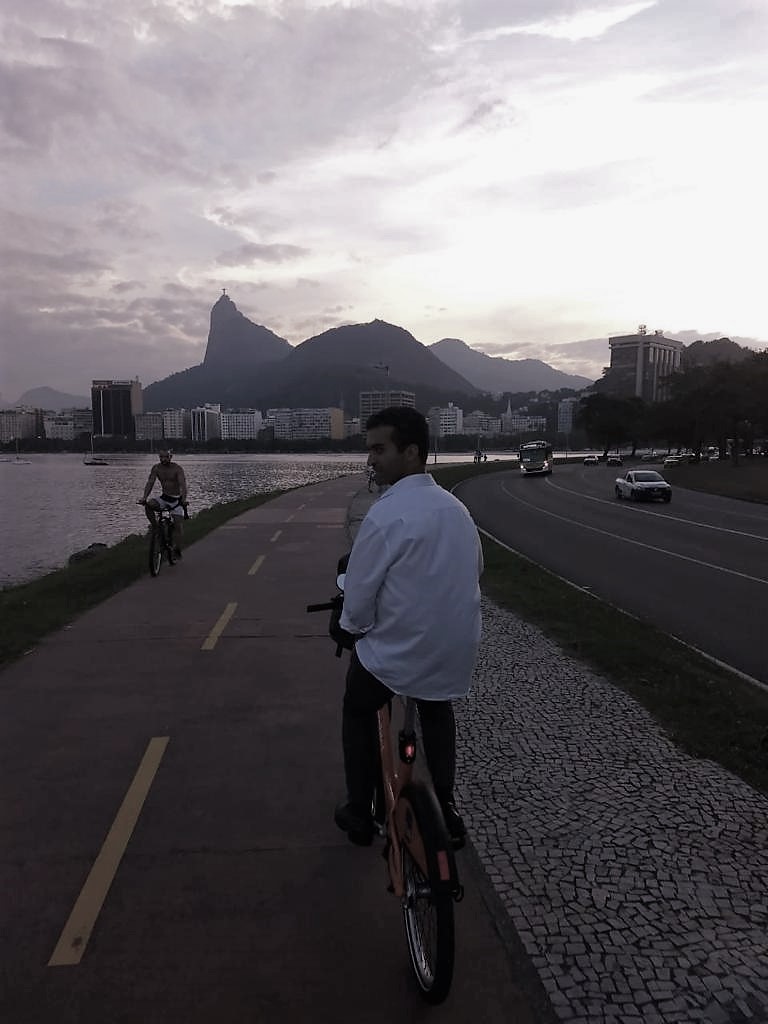SABRINA - INTERVIEW WITH THIAGO HERICK DE SA (WORLD HEALTH ORGANIZATION)
30-11-2021
With Thiago Herick de Sa from the World Health Organization we have talked about the ways of commuting in the period of COVID-19, the Pan-European Master Plan for Cycling Promotion, investments in cycling and much more.
Two Danube Transnational Programme projects, the SABRINA and Danube Cycle Plans project (a few words about both projects are below), dealing with cycling have joined forces and prepared a series of interviews with people working in the mobility and transport field, with the focus on cycling. We have asked them about their opinion on different topics connected to more cycling, safer cycling infrastructure, promotion of cycling, etc. Visit the webpages of both projects to read the interviews which will be collected also in the joint newsletter published in December 2021 (subscribe HERE).
______________________________________________________________________________________________________________________________
 Thiago Herick de Sa is a Technical Officer in the Department of Environment, Climate Change and Health at the World Health Organization, Headquarters (WHO-HQ). He works with issues related to healthy urban environments and sustainable transport, with a focus on the health and economic impacts of sectorial policies and interventions.
Thiago Herick de Sa is a Technical Officer in the Department of Environment, Climate Change and Health at the World Health Organization, Headquarters (WHO-HQ). He works with issues related to healthy urban environments and sustainable transport, with a focus on the health and economic impacts of sectorial policies and interventions.
Thiago holds a Ph.D. in Public Health from the Universidad the São Paulo, Brazil. He is a Brazilian national, living and working in Geneva, Switzerland.
______________________________________________________________________________________________________________________________
The World Health Organization has issued several recommendations on how to commute in the period of the COVID-19 pandemic to protect people´s health (WHO: Supporting healthy urban transport and mobility in the context of COVID-19, 2020). One of the emphases is on rebalancing the distribution of different modes of transport towards reduced car dependency and increased safe walking and cycling. How can urban environments achieve more cycling?
It is important to stress that there is not a single intervention that would improve cycling levels in urban environments. Urban environments can achieve more cycling through a package of coordinated actions across different sectors. That should include changes in the urban built and natural environments to protect and promote cycling, e.g. by developing a network of dedicated cycling lanes combined with smart management of green and blue spaces to provide shade, thermal comfort, and exposure to nature, making cycling not only safer but also healthier and more pleasant.
It should also include actions to change negative cultural and social norms around cycling, in this way contributing to removing barriers for underrepresented groups to get on a bike. Integrating cycling in the public transport system is key as well as the creation of bike-friendly schools, workplaces and businesses. Plus, as we know that two main barriers to cycling are having access to a bike in the first place and knowing how to ride a bike in the urban streets, we also need actions to facilitate access to bikes, such as bike-share systems, tax subsidies on the production and retails of bikes to make it more affordable to buy and maintain, bike-to-work loan schemes, to name a few, and also action to teach people on the use and maintenance of bikes, starting with children at school but also in workplaces or dedicated bike schools for those who did not have the chance to learn how to ride early on or are too afraid to bike. Action is needed to mitigate the risks associated with cycling in poor urban environments – beyond the provision of dedicated infrastructure – and that includes incorporating cycling considerations on the curricula, training and examining of all drivers, including bus and truck drivers, as well as actions to develop a culture of peace, respect and prioritization of non-motorized modes on transport.
Finally, most places do not have a clue on how many people cycle, who they are, where they cycle from and to, whether they combine cycling with other modes or not, how many cyclists get injured in traffic, etc. So, it is very important to put in place data and information systems around cycling since all this information is necessary for an efficient and cost-effective promotion and protection of cycling in urban environments.
 The WHO Regional Office for Europe and United Nations Economic Commission for Europe (UNECE) supported the Pan-European Master Plan for Cycling Promotion adopted in May 2021. In your opinion, what are the best methods to increase the awareness of relevant stakeholders about the needs of cyclists and to increase their capacity to promote cycling?
The WHO Regional Office for Europe and United Nations Economic Commission for Europe (UNECE) supported the Pan-European Master Plan for Cycling Promotion adopted in May 2021. In your opinion, what are the best methods to increase the awareness of relevant stakeholders about the needs of cyclists and to increase their capacity to promote cycling?
I would like to congratulate my colleagues from UNECE and from the WHO Regional Office for Europe for their tremendous support in the development of the Pan-European Master Plan for Cycling Promotion.
One key aspect, in my view, to increase the awareness of relevant stakeholders about the needs of cyclists and to increase their capacity to promote cycling is to highlight the full range of health, environmental, climate, social and economic benefits that we could get by investing in cycling and, today, we even have analytical applications, such as the Health and Economic Assessment tool for Walking and Cycling (HEAT tool), that make this type of integrated assessment much simpler while still rigorous and evidence-based.
While the HEAT tool has been originally developed for the European context, it has been recently adapted for global use, which means that this dialogue can happen with a much broader group. Another important aspect of this equation is to bring stakeholders to share and learn through e.g., knowledge exchange, peer-to-peer learning, joint projects and capacity building activities. People, communities and cities can learn from one another and benefit from each other’s experiences, improving the understanding of the many benefits coming from cycling but also creating an enabling environment for continuous dialogue and sustained exchange.
Another objective of the Pan-European Master Plan for Cycling Promotion is to increase the safety of cyclists in the UNECE and WHO member states and halve the number of fatalities and serious injuries of cyclists per kilometer cycled annually. The partners of the SABRINA project believe safe cycling infrastructure is the pre-condition for achieving this goal. Would you agree with that? What are other steps to achieve fewer fatalities and seriously injured amongst cyclists on European roads?
Safe cycling infrastructure is an essential component to achieve those objectives. Several of the additional steps needed to achieve fewer fatalities and seriously injured amongst cyclists have already been mentioned in my first response. Now, as obvious as it seems, it is important to note that a very effective way to have fewer fatalities and seriously injured cyclists is to get rid of all the cyclists in the first place! This is definitely something that we should avoid and, in that sense, it is essential to emphasize that we should aim to eliminate traffic fatalities and injuries from all modes of transport, including cycling, while at the same time working to increase substantially cycling levels, which makes safety issues a much bigger challenge and an even more important aspect to be addressed effectively.
 Many cycling advocates say that ‘investing in cycling infrastructure costs money, not investing in it costs even more'. Are you nodding when seeing statements like this one? You have dedicated a lot of your work to the health impacts of cycling and sustainable transport. Why in your opinion is important to integrate cycling into health policies?
Many cycling advocates say that ‘investing in cycling infrastructure costs money, not investing in it costs even more'. Are you nodding when seeing statements like this one? You have dedicated a lot of your work to the health impacts of cycling and sustainable transport. Why in your opinion is important to integrate cycling into health policies?
Investing in cycling is highly cost-effective as compared to not investing in it. Now, even worse than simply not investing in cycling is actually shifting these investments to private motorized modes of transport, such as cars and motorcycles, which is unfortunately quite common and highly ineffective.
It is really important to integrate cycling into health policies, but I would say that it is perhaps even more important to integrate health into urban and transport policies that will ultimately protect and promote cycling! The reasons are straightforward: from climate change to environmental degradation, from COVID-19 to the pandemics of non-communicable diseases, (e.g., heart disease, stroke, diabetes and cancer), from the poor living conditions in urban environments to the challenges with health and social inequities, we have several competing agendas to tackle with very limited time and even fewer resources, particularly at the local level. Cycling provides a healthy, climate and environmentally friendly way of interacting with the urban environments and, if properly planned, actions to protect and promote cycling have the potential to deliver on all these agendas simultaneously, a clear win-win-win-win-… situation.
In one of the interviews, you described yourself as an urban cyclist. Does that mean you use your bicycle more for daily commutes and for everyday errands or do you also like to cycle for leisure outside of the urban areas?
I use my bicycle for everything! Whether on my daily commutes, escapes to the countryside, work-related events, leisure time, I am always on a bike. When that is not possible, I choose walking or to take public transport. Like many people, I embarked on this idea that I needed a car for this or that reason, which in the end was really not what the reality of having cars showed me. So, while I have always combined different modes of transport, including the private vehicle, I noticed that I was happier and healthier riding a bike (my ‘magrela’ = ‘skinny’, as we say in Portuguese) so I gave up completely on this idea of having a private vehicle more than 15 years ago while still living in Sao Paulo, Brazil and kept that after moving to London and now Geneva. On the rare occasions where I need a car, I usually go for a car share scheme or a taxi.
Have you ever had any bad experience with poor/unsafe infrastructure while cycling and what was it?
Everywhere, throughout my life! One would be surprised at how unprepared cities are to welcome and protect cyclists, even in high-income countries with a stronger cycling culture and higher levels of cycling. Cycling (and walking) has historically been marginal modes of transport, despite oftentimes being responsible for a large share of trips made. In many places, these modes become invisible, and often literally marginalized – pushed to the margins – which, in the case of cycling, puts cyclists in the difficult situation of having to choose whether you should try to share the space with cars, trucks and buses or with pedestrians on the sidewalks (is the sidewalks are ever there, which can also be rare in many places), both creating conflicts and putting vulnerable users at risk.
What is your first association to the word bicycle?
My magrela? A good old friend.
______________________________________________________________________________________________________________________________
Photo 1: Thiago Herick de Sa (personal archive)
Photo 2: Thiago and his wife biking in the countryside of Italy in 2019 (personal archive)
Photo 3: Thiago during the Velo-city conference in Rio de Janeiro, Brazil, 2018 (personal archive)
______________________________________________________________________________________________________________________________
A few words about both projects:
• SABRINA project focuses on road infrastructure safety for cyclists as one of the most vulnerable road users. It tackles cycling infrastructure safety issues on existing, planned, and missing cycling corridors crossing nine countries in the Danube region. The main goal is to help decision-makers plan, design, and implement safe and sustainable solutions for improved cycling infrastructure in the region. More at the project’s webpage, Twitter or Facebook account.
• Danube Cycle Plans project aims to implement Pan-European Master Plan for Cycling Promotion. Project activities include the development of National Cycling Plans based on a common transnational Danube Cycling Strategy, defining a Danube cycle route network, infrastructure standards and adequate financial support and increasing the awareness of relevant stakeholders for the needs of cyclists. More at the project’s webpage.
![]()



